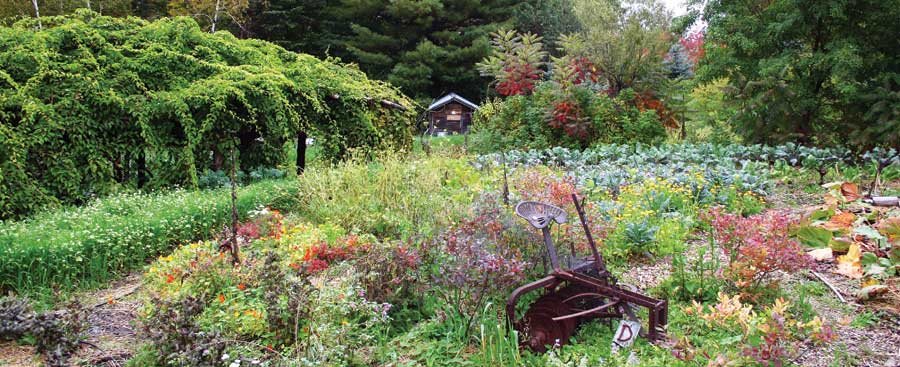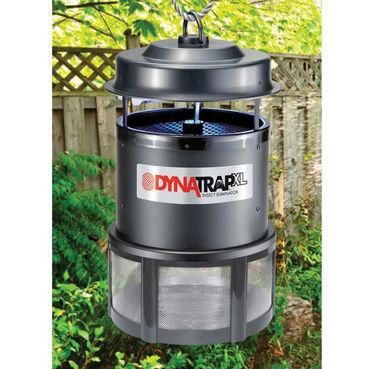I have an entire cabinet full of stuff from Mountain Rose Herbs. They sell very nice stuff if you make soap, lotion or just like to have essential oils on hand. And again, I don't work for them and have nothing to gain from this post. I just like to share reliable resources.
1 Comment
My Great Aunt Ruby lived throught the Depression. I asked her once what she remembered about it, and if it was really difficult for her family. She told me that it was harder for them to get sugar and coffee, but otherwise they were just fine. Afterall, they were farmers!
From GRIT magazine's website, which is another great resource... An Iowa woman recalls the effect that welfare's free groceries had on the work ethic of some of her contemporaries... During the depression era, our bank closed on December 22, 1932. My brother-in-law had just taken a load of hogs to the Oscar Meyer company, and rushed to the bank with the check, and managed to deposit it just before the 2 p.m. deadline. Of course no one told him that he wouldn't get it back for a long, long time. I had cashed my monthly teacher's check ($95) that day, but took it all in cash as I had some Christmas gifts to buy, and had signed up for life insurance and needed money for the first payment. That amounted to almost the only cash our family had on hand for a long time, so the insurance payment was delayed. Since we lived on the farm, we always had plenty of food. Read more at GRIT.com http://cappers.grit.com/good-old-days/depression-era/free-groceries-anonymous.aspx#ixzz1tAmfTZQO from Mother Earth News, which is an indespensible resource for homesteaders like me...
Combine permaculture gardening techniques and edible landscaping ingenuity in your garden by growing perennial vegetables. You’ll be surprised by how little work garden perennials require when compared with the work you expend growing annuals. Plus, our list of best perennials and resources guide will get you started with this sustainable, practical gardening technique. Suppose a new agricultural breakthrough promised higher yields, a longer growing season and much less work. These claims can become real benefits for those willing to make a change to a way of gardening that more closely mimics nature. Nature’s ecosystems always include not only annual vegetables, but also perennials — edible roots, shoots, leaves, flowers and fruits that produce year after year. Besides fruit-bearing trees and shrubs, more than 100 species of perennial vegetables grow well in North America. Read more: http://www.motherearthnews.com/organic-gardening/perennial-vegetables-zm0z12amzkon.aspx#ixzz1tAkyoAuO If you sew, knit or embroider, fabric.com is great. Free shipping when you order over $35.00 worth of stuff, and right now they have two sales going on...50% off selected retro/mod style fabrics, and 13% off general merchandise.
Personally? I think manipulating genes for our own benefit is creepy. I prefer to plant heriloom seeds and eat real food when I can. Frankenfood. The whole idea just seems Brave New Worldee. Again, from the Farmer's Almanac website...
From tomatoes engineered to be hardier for travel to pest resistant corn, many of the foods we find on the shelves at the local grocery store today are genetically modified organisms, or GMOs. Our modern understanding of genetics has given scientists the ability to select traits from one species of plant or animal and impart them into another, and major biotech companies around the world are doing just that. While food created in a lab may sound like something out of a science fiction movie, the fact is, whether you realize it or not, most of the food you eat probably comes from genetically modified sources. Even if you grow most or all of your own food from organic seeds, there’s still a very strong possibility that your vegetables are not as pure as you think. Read the entire article here: Last year we purchased 25 tiny adorable fuzzy chicks, and Blake built a brooder down in the basement. We had never had poultry before, but we sure were enamored with these little creatures who peep-peeped all night long, in a kind of sing song lullaby for us as we slept nearby in our bedroom. Everyone came over to see the babies, and we oooo-ed and ahhhh-ed over the baby birds as was required.
The first of many lessons for us in poultrydom was that when you mail order from a hatchery, you will get more than you ordered. We ordered 25 and received 27. They call the extra chicks packing peanuts, to add warmth and to make up for any that might die during shipping or shortly thereafter. As you can imagine, being shipped is difficult on the little buggers, so losing chicks after you receive them is not uncommon. Be prepared, as I have heard very few people talk about 100% survival rates for shipped birds. I bought them this way so that I could get healthy birds from a reputable breeder, rather than buying chicks at a feed store who have come from parts unkown and might be sick. As there are no hatcheries nearby, I ordered from Estes Hatchery in Springfield Missouri. The post office called at five in the morning to tell us to come and get our noisy package. After Blake and I had filled ourselves with coffee and could not endure the pleading of our children any longer, the girls and I loaded up in the car to get our new chickens. We had purchased the chick feeders and waterers, the heat lamps and packs of wood chips. We had prepared a HUGE plastic bin for them to be in while they were tiny, and we thought we were ready to be chicken parents. Wrong. Things never go the way you think they will on a farm. We brought the biddies home and put them all in the plastic bin. WAY too small. As is normal procedure around here, Blake began to scramble to find and build a solution to the problem I had created. He build a lovely giant brooder out of wood with a plastic liner on the bottom. Those chicks had so much room, it really was adorable to watch them run around and do their little chicken business. I could sit there for hours observing tiny little chicken behavior that I had never seen before; strecthing their wings and legs, tilting their heads back to swallow one drop of water at a time. And sometimes I did just sit and gaze at them, watching my new charges as I dreamt of grown chickens roaming the farm and producing eggs, daydreaming of my girls carrying baskets full of our own eggs straight from our own coop. No more factory eggs; could we, the city slickers, actually achieve that? Within 24 hours of bringing the babies home we noticed that their poo was sticking to their behinds. Now, when you have farm animals, birthing and death, food and manure become a part of your new life. If you are easily grossed out, farming might be a difficult thing for you. I have been around animals my entire life, dogs and cats, hamsters and horses, I even volunteered at the zoo to shovel elephant poop just so I could be around the elephants. In addition to all of those furry creatures, I am a mom, so someone else's bodily fluids have been a part of my entire life. Dealing with a crusty chicken butt? I can handle it. Researching how to deal with this pleasant issue, I come across the common name for it; pasty butt. I'm not kidding. It can be deadly, too, and not in a pleasant way (if there is such a thing). During shipping, chicks can get stressed, causing all manner of problems. When you receive your chicks, the first thing you do is take each one out of the box, one by one, and dip their tiny beaks into their water so that they take a drink and so that they learn. These babies have never had anything to drink. If they congregate under the heat lamp in a big pile, it is too cold. If they are scattered to the four corners, it's too hot. You MUST have a thermometer to know precisely what the temperature is, because too hot or too cold will kill them. Any kind of stressors can make them sick in the first few weeks. A couple of days after bringing the chickens home, several of them got pasty butt. That requires warm water and some paper towels (or cotton balls or q-tips or something). You have to remove that poop several times a day or it will build up, it will block their heiny, and they will die. Not a good way to go, so WIPE THOSE BOTTOMS!! :) We did end up losing one Buff Orpington chick. She had the worst of the pasty butt. Some said give them oats, others said add apple cidar vinegar to the water, some hardened and experienced farmers said cull her, one chick isn't worth the time it takes to try and save it, and they are probably right. In spite of all the advice, she just couldn't make it no matter how hard I tried. The girls buried her in a little box and we had a tiny bird funeral for her out by the garden, the first of many life and death issues to be faced on the farm. Those first lessons are always the most difficult, especially for kids. Not long after the death of that chick, one little Buff Orpington chick decided that her legs would go wonky. She couldn't walk correctly, and sometimes not at all. We segregated her in a see through plastic bin within the brooder so that she could see the other chicks and not get lonely. I tried various q-tip splints and even sports tape (I even began making a chick sling chair out of a cut up cottage cheese container, but I gave up on that), and nothing really worked well. We decided to let nature take it's course, and just left her alone. After a couple of weeks she healed up on her own just fine, and now we can't even tell which one was injured. The chicks soon grew into teenagers, and we had to get them out of the house. But to where? It was still too cold to put them outside, the coop wasn't 100% finished yet, and the chicks hadn't fully feathered out. Solution? There was an old round metal horse trough on the property when we bought it. We rolled that thing into the shop, filled it full of wood shavings, put the heat lamp above it and voila! Improvised brooder. We had bought enough time to finish the coop and keep the teenage chicks warm enough until spring. We put the goofy looking adolescent birds into the chicken coop when they were about three months old and we have never looked back. Blake put a four foot fence around the chicken yard, and some of the hens fly out to free range while others are content to stay within the fence and eat scratch, scraps and whatever else we throw over the fence for them. We gave three hens to a good friend, one rooster got killed, one rooster was butchered, three guineas were butchered, and now we have ten ducks, ten guineas and 23 laying hens. We currently get +/- two dozen eggs per day, and the girls have started selling them. We now make enough to buy chicken food and pay the girls a little bit too. You can read and read and read about how to take care of things when it comes to plants and livestock, and everyone seems to have a different opinion of what works well. That is when you realize that there really is no "right" way to live this life. You do the best you can, learn from your mistakes, and move on, hopefully helping others with what you have learned along the way. We bought this several years ago, and it still works like a champ. Was just out on my porch, and I have NEVER seen bugs out in force like they are now!! Turned the bug catcher on for the first time this spring a few minutes ago and it didn't miss a beat. We empty it every morning for the chickens duirng the warmer months, and they love it.
I was just commenting the other day that I need to find a short handled hoe that I can use while sitting down.
From the Farmer's Almanac website... "The right tool for the right job” is a good quote for anyone who knows what it is to labor at a task with the very wrong tool. This is certainly true for the seasoned gardener with a shed full of assorted hoes, rakes, hand trowels, and spades for every gardening occasion. And there are few things more exciting for a gardener than coming across a tool that just may make cultivating, weeding, or harvesting easier and more enjoyable. While the following five tools may not have a coveted place in your shed just yet, by the time you are through with the following list you may find yourself making room next to some of your old standbys for these lesser known, but must-have, tools. #1. Nejiri Hoe I came across this little gem of a tool my second year gardening. I was so excited by it that the woman I was gardening for gave it to me as a gift at the end of the season. Long used by Japanese gardeners, this strong and lightweight hoe is excellent for weeding. Many standard hoes behave more like cultivators, stirring up weed seeds and giving them an opportunity to sprout. The Nejiri hoe’s sharp blade skims the surface the soil quickly, eliminating shallow rooted weeds without disturbing the soil or bringing up the unwanted weed seeds. Traditionally a short-handled tool, you can also find long-handled versions, which will be easier on your back. If you are looking for a good hoe like the Nejiri that also does some cultivating, the Homi Korean plow hoe is a good choice. It is sharp enough to slice through thick stalks, and good for digging, thinning, transplanting and cultivating. #2 . Circular Hoe Just a couple of years ago, I was introduced to a favorite tool of mine called the scuffle hoe, also known as a hula or stirrup hoe. The open area in the middle, and its unique swivel motion and stirrup shape, made it great for cutting away weeds without moving soil especially along edges. Recently, however, I came across something called a circular hoe or circle hoe. Similar in design the circular hoe is exactly what it sounds like, a circular metal ring stuck on top of a long wooden handle. Unlike the hula hoe, the circular hoe doesn’t swivel, but it still cuts off weeds without moving the soil. It can also be used as a cultivator. It is best around and under foliage of your plants, and in tight rows. This might be one advantage of it over the scuffle hoe, which can sometimes be tricky to use in tight spaces. The circular hoe is easier to sharpen than the scuffle hoe, too. The circular hoe has been gaining in popularity, and has won quite a few different awards for its function and ergonomic design. Still somewhat new to gardeners, it is definitely going to become a favorite in the future. Read more at Fantastic books, whether you live in the country or are gardening in the city... Please be patient as I rearrange the site to make it more user friendly. I have added some ads and widgets, but please know that any links or ads I put on this site, whether in the side bar or in posts, are only those products or websites that I have used and consider useful, or are sites that others whom I trust have used with success. I will never post something that is a crappy product or one that I cannot honestly recommend. Thanks for reading my ramblings, and I hope that I post some
|






 RSS Feed
RSS Feed